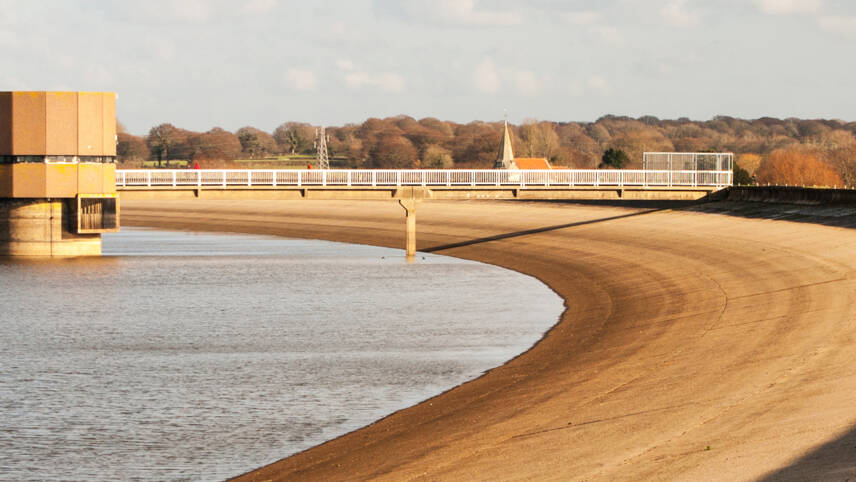This is the Sponsored paywall logged out

Singapore has managed to overcome a challenging natural environment to become a world leader in water infrastructure. William Yong, of Binnies Singapore, explores the country’s water resilience success story and the lessons we can all learn from its self-sufficiency.
Today, Singapore is leading the way in innovative and resilient water infrastructure, harnessing the power of digital technologies to deliver this vital resource to the population.
 Over the last 100 years, it has overcome many challenges in order to achieve this, championing novel solutions for its unique circumstances. The country faces challenging environmental and geographical conditions – it is prone to drought and flood, and its flat topography is now making it susceptible to rising sea levels.
Over the last 100 years, it has overcome many challenges in order to achieve this, championing novel solutions for its unique circumstances. The country faces challenging environmental and geographical conditions – it is prone to drought and flood, and its flat topography is now making it susceptible to rising sea levels.
Against the backdrop of an escalating climate crisis and significant levels of water stress, Singapore’s infrastructure has been designed with long term resilience in mind. Such an approach to water management has enabled the country to overcome these challenges to be one of the world’s success stories in delivering affordable, efficient and high-quality water. Behind this transformation and development there are lessons to be taken to further strengthen the infrastructure of nations around the world as we all face modern and evolving challenges.
The growth and development of what is now world and industry-leading technology is a tradition that spans many decades of Singapore’s history. Though my work at Binnies, and that of many colleagues before me, we have seen first-hand how cutting-edge technology has been utilised in the national effort to achieve water security. Our involvement dates back to 1922, this December celebrating our 100th anniversary in Singapore, when we first began supporting the Singapore Government to deliver its vision. In the years that followed, the Public Utilities Board began to develop the ‘Four National Taps’ which to this day ensure Singaporeans have access to a safe and resilient water supply.
The first of these national taps was developing local catchment infrastructure and the Upper Pierce Reservoir stands out as a pivotal moment in the country’s water story as one of our earliest projects. In the early 1970s, work began to build a dam upstream of the existing Pierce Reservoir which dated back to 1910. By building this second dam, it became possible to store greater volumes of water in the newly created upper reservoir. At its completion in 1975, the Pierce Reservoir was the largest in Singapore, also comprising of a treatment plant and 2 conveyance towers. Through the development of reservoir networks such as this one, Singapore has been able to harness local catchments which now cover one third of the country’s land surface and overcoming a primary obstacle created by the island’s small size – a lack of space to store rainwater.
The treatment plant built at the Pierce Reservoirs, Chestnut Avenue Waterworks, further exemplifies Singapore’s growth as a leader in infrastructure and innovation. At its completion, the waterworks was the largest facility to incorporate membrane filtration technology, representing a technological breakthrough. The membrane process, as is still utilised today at the site, is gravity driven which means there is less reliance placed on pumping machinery. This enables the treatment process to be low-cost and low-energy, supporting national efforts to provide a highly efficient service. This low energy model is now even more important as we all strive to adopt as efficient systems as possible in the face of climate change.
In its more contemporary history, Singapore has also made ground-breaking progress in developing advanced technological solutions that harness the power of the digital world in the face of modern challenges. In addition to bolstering its catchment resources and importing water from its neighbours, innovators at the Public Utilities Board have championed NEWater – high grade, reclaimed water that is treated to a standard safe for potable uses – and desalination, the fourth national tap.
Amongst the four plants currently in operation across the country, Keppel Marina East Desalination Plant is a real feat of modern engineering excellence. Completed in 2020 following three years of construction, the plant is Singapore’s first dual mode desalination facility. Depending on the surrounding conditions, it can process freshwater from the Marina Reservoir as well as desalinate seawater. This flexible approach means the plant can respond to and manage growing and evolving pressures, further securing resources into the future. As the Public Utilities Board Engineer, we at Binnies have been afforded the opportunity to witness the fruition of its vision in creating these resilient systems that will secure national self-sufficiency for the future.
As we mark our centenary, it is clear that innovative thinking has driven Singapore to overcome its environmental circumstances to secure a robust and resilient water system. The pioneering engineers of the early twentieth century set the country on a path to realise a vision where we could supply ourselves with affordable, safe and reliable water services. We look ahead with great excitement to what the next 100 years will bring.
William Yong is managing director of Binnies Singapore, an RSK Group company. He has led the many high-profile projects in the region including the Deep Tunnel Sewerage System Phase 2 in Singapore and the Western Corridor Recycled Water Scheme in Brisbane, Australia. More recently he led the successful pursuit of the Integrated Waste Management Facility project in Singapore and the Manila Water Framework in the Philippines.




Please login or Register to leave a comment.